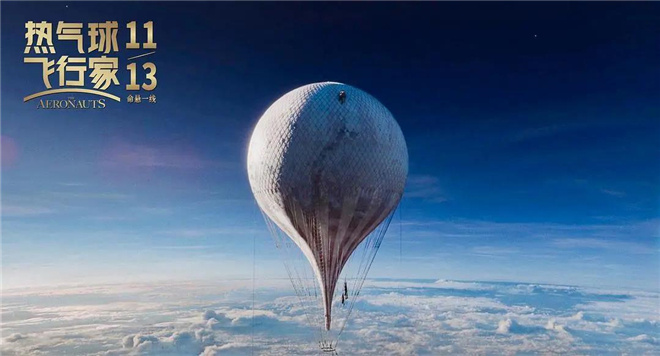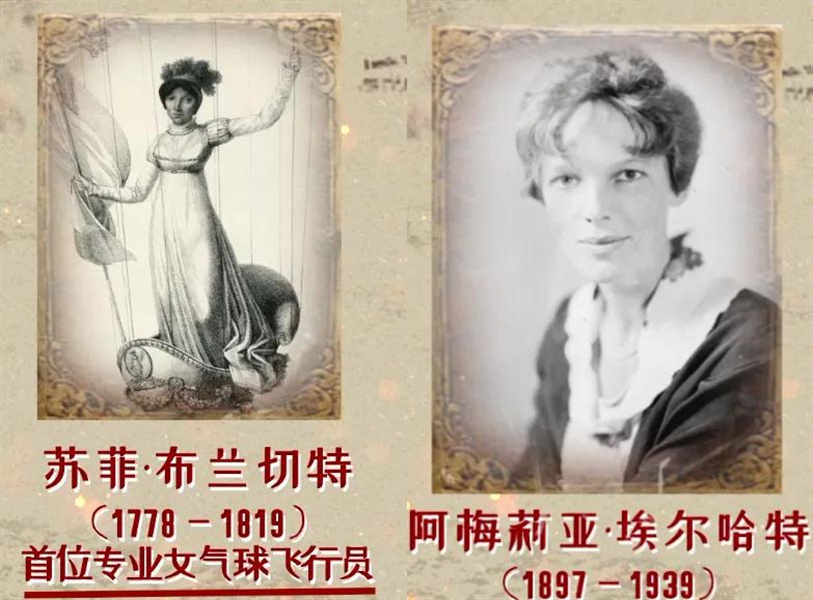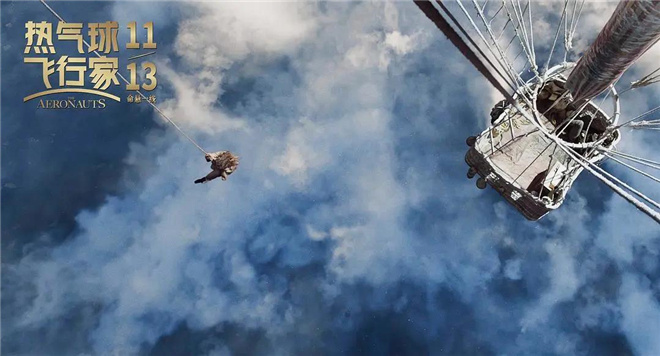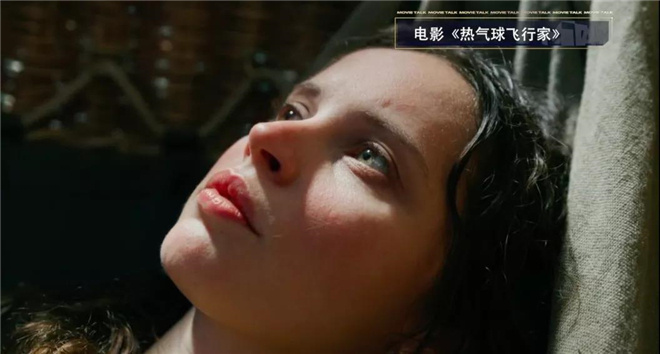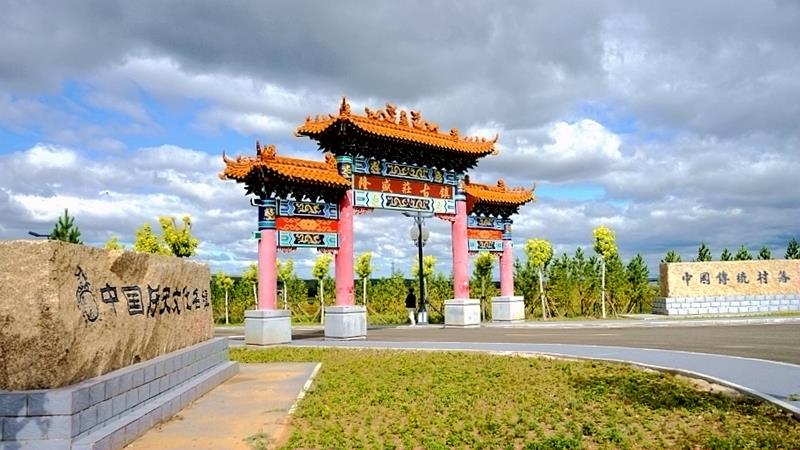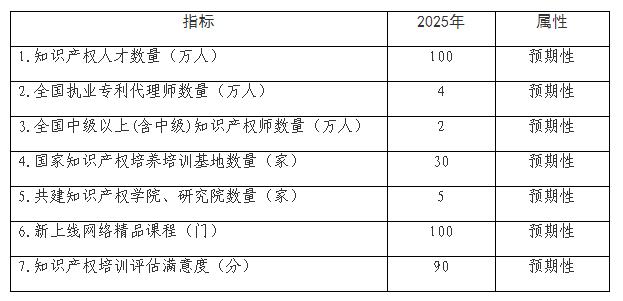Since the imperial examination system, countless scholars have been studying hard to get to the top, until their twilight years, just as Zhao Wei once lamented in the Tang Dynasty, "Emperor Taizong really made a long plan and earned a hero a white head." Indeed, many scholars took the exam again and again, but for many years, they kept on wearing the linen clothes of unofficial scholars. For example, Liu Xubai, a middle-aged man, found that Pei Tan, the examiner, was actually a classmate who took the exam together that year, so he wrote a poem: "Twenty years ago, in this night, it was like a candle. I don’t know how many years will last, but I am still waiting for the public in linen. " It is bitter to read. In this long-term suffering with no end in sight, there are certainly scholars who can stick to their original intentions, be bitter and lonely, and not seek shortcuts; However, some people, either deliberately or by mistake, have embarked on the road of cheating. In Song Dynasty, the imperial examination system became more and more mature, and the number and scale of candidates in the imperial examination were far ahead of the previous generation, so cheating methods also developed with the development of scientific examination.
To understand the cheating methods in Song Dynasty, we need to start with the examination process. After Song Taizu established the palace examination system, the scientific research in Song Dynasty was fixed as the three-level system of solving the test, provincial test and palace examination. The solution test is an examination for selecting juren in various counties, which is generally held in various state capitals, but it also includes the solution test in the transportation department (for imperial clan children) and the solution test in imperial academy. The provincial examination is a re-examination for people to attend in the Ministry of Rites, because it is usually held in the spring of the second year after the solution of the examination, so it is also called "Spring Trial". Besides the provincial examination held in Beijing, it also includes the "quasi-provincial examination" set up separately in Sichuan in the Southern Song Dynasty. Palace examination is the highest level exam presided over by the emperor himself, also known as "Tingshi". Perhaps it is because palace examination’s admission rate is relatively high to show the emperor’s kindness, and scholars don’t have to take the branch risk. Perhaps it is because the emperor’s dignity makes scholars more cautious when taking the exam. In short, cheating in palace examination is relatively rare. Among the existing materials, the cheating cases in the Song Dynasty are mostly concentrated on the level of solving the exam and saving the exam.
Take an exam under false pretenses.
The procedure of registering for the examination is called "please ask for the examination" and "take the examination", which is the first step in the long road of imperial examination for scholars. In order to understand, since the Tang Dynasty, scholars have to submit their "family name" to counties, which generally includes name, hometown, age, three generations, etc., and also indicate information such as "number of examples" (I have participated in several solutions). When answering the paper, the family statement should also be copied at the beginning of the test paper. In addition to the family status, there is also a "guarantee", that is, every three taxi drivers should be guaranteed to each other (if there are less than three people in each state who participate in the trial, the local magistrate will be the guarantor), which proves that the same guarantor is not an impostor, has no defects in conduct, and so on. If someone commits a foul, other people with the same insurance will also be implicated.
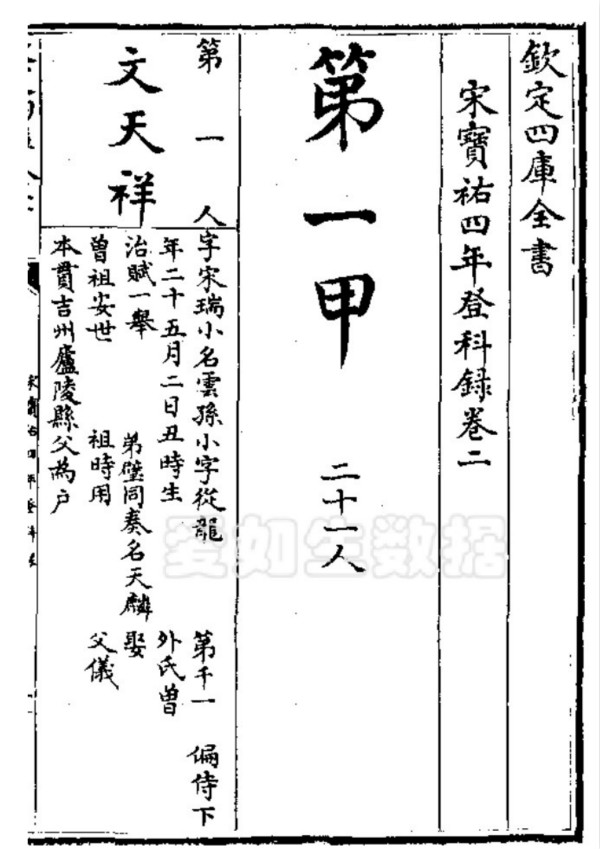
The family status of Wen Tianxiang when he won the top prize in the fourth year of Bao You.
In the Song Dynasty, candidates should, in principle, ask for a solution at their registered residence, and "those who have committed criminal responsibility and never stop doing things" should not take the initiative, those who are still mourning for their parents should not take the initiative, and those who are physically "dumb", "crippled", "dwarf" and "deaf" should not take the initiative. However, unlike the exams usually held every year in the Tang Dynasty, the exams in the Song Dynasty were initially held every other year, sometimes once every four years, but from Song Yingzong, it was basically determined to be once every three years. Youth is short. In the era of inconvenient transportation and no Internet, besides physical illness, it is not easy to hide. Candidates who have been punished for breaking the law or are still in filial piety can hide the fact that they are not qualified for this exam if they want to move to another place. It is also human nature. During the Jubilee of the Northern Song Dynasty, there was a scholar from the Hanlin Academy, such as Chao Jiong, who played, "All the states have juren, and most of them have their own clothes, so it is difficult to get a solution, so they went to the capital hub to fill their books." The imperial court’s solution is that, in addition to the candidates who are still in mourning, those candidates who really have no household registration in the local area can be sponsored by Mingguan or juren who have participated in the provincial examination and palace examination, and other places can be set aside to take the examination. This kind of decision-making is not inhuman, but to a certain extent, it also appeases the atmosphere of cheating.
However, a large number of candidates flocked to Kaifeng or other States to apply, most of them were not for concealing criminal records or mourning, but for other reasons: First, Kaifeng Prefecture is the capital, and studying and communicating in Kaifeng can get the test atmosphere first; Secondly, the number of people sent to different places is different, which makes it easier to succeed in Kaifeng or other places where the amount is wide than in Benguan, just as today’s "college entrance examination immigrants" enter Beijing household registration in order to be more easily admitted to famous schools in Beijing. Because according to the policy of the Song Dynasty, although a non-native can buy land locally, he can have a local household registration, so he is also eligible to take the exam. Therefore, a taxi with sufficient financial resources can buy land in other counties and open more accounts, so that he can "make a temporary contribution".
In addition, some people are even more unscrupulous. For example, in November of the seventh year of Tiansheng (1029), someone played: "Today, Kaifeng Prefecture has more than 1,900 scholars, and many of them have taken up household registration." An example is given: Wang Xiuji, the elder brother of Wang Ji, a juren from Luzhou, bought 18 acres of land in Xiangfu County of Kaifeng Prefecture, so he got the household registration of Kaifeng Prefecture. So when Wang Ji delivered his family certificate, he called Wang Xiuji his father in order to take the exam here. There is another scholar named Wang Yu, who also joined Wang Ji’s family. Even the "three generations" part of his family also borrowed three generations from Wang Ji’s parents. Therefore, the performer requested to strengthen the restrictions, requiring that only taxis who have been registered in Kaifeng for ten years and have lived here can get the solution in Kaifeng. On the 19th of that month, Song Renzong issued a letter to the effect that "a juren who has been registered in Kaifeng for more than seven years and does not live elsewhere" can take part in the solution test in Kaifeng. In addition, although he has no household registration, he has never taken up the places in other states. After verification, he will be guaranteed by the Mingguan, or he can take the test locally. This letter later became customized. In the fifth year of Yuanyou (1090), for example, there were more than 2,000 people in Kaifeng who should take the exam for the imperial examination, so that the Ministry of Ritual twice requested that the places of other declining subjects such as Ming Jing be allocated to the imperial examination, and finally the number of places admitted for the exam was changed from the usual 100 to 300. It is difficult to know the total number of people who took part in the provincial examination in those years, but in the last subject, that is, in the spring of Yuanyou three years, there were 4,732 people from all over the country who took part in the provincial examination in Beijing. Other state governments often have only a few dozen places to send people away. For example, in the fifth year of Xuanhe (1127), Lin ‘an government only had 14 places to send people away.In this case, the amount of Kaifeng’s solution is indeed wider than that of other places. It is no wonder that many people have rushed to Beijing to get the solution.
In addition to Kaifeng, there are cases of taking exams under false pretences, and scholars in other counties sometimes take solutions from different places, similar to the situation that college entrance examination candidates try to take exams in remote areas such as Qinghai and Tibet today. This is not only due to the difference in the amount of solution in different places, but also related to the difference in the degree of cultural development. Ye Shi of the Southern Song Dynasty once pointed out: "Today, between Jianghuai and Jianghuai, or even those who can only read and write can make up for it; People in Fujian and Zhejiang, however, who are distinguished from each other, are trapped in a small amount of money instead of choosing, running around, begging for guests, risking relatives, or taking advantage of it. " In fact, there is indeed a case of "people from Fujian and Zhejiang" running around: in the 26th year of Shaoxing (1156), the soldiers of Zhenjiang Prefecture were furious when they found that some Fujian people had taken the exam under false pretences, and they picked up sticks to beat them. Magistrate Lin loudly led people to inquire, and as a result, "there were injured officials among the flying stones", which developed into a bloody incident, and Lin loudly arrested 18 people. There is also Qin Wanquan of Gwangju who falsely claimed that Lin Yingchen, a scholar, tried it, and the masses were very angry, so that "Lin Yingchen was dying, the scholars were shocked and scattered, and several imperial examinations were broken." A similar situation happened in Tanzhou, and the result was that "the house was noisy and several people were killed". Fang Shao was much luckier in the Yuan You period of the Northern Song Dynasty. He went to Hangzhou from Jiangxi to take the exam, and was complained by the juren of Tongbao, but Su Shi, the magistrate, let him participate in the understanding test normally.

Ye Shi’s discussion on the different problems of solving quotas in different places
It should be pointed out that in some places, the date of taking the exam is not uniform, which objectively provides some scholars with the opportunity to take the exam in more than one state. In the Song Dynasty, most parts of the country took the exam in August, while Fujian took the exam in July because of its long distance, "Sichuan and Guangzhou are especially far away, and June is also used". The original intention of the policy should be to consider the Chinese scholars, so as to facilitate those who have a long journey to get up early and rush to Beijing to participate in the provincial examination in the next spring, but it was used by some scholars. "There are at least three people who take the test, and if they hope to try more, they will get one." But in the Southern Song Dynasty, Lin ‘an, the capital, was no longer far away from Fujian and Guangzhou, so all the places except Sichuan were unified for the August 15th exam. This reform has been praised by many people, "the disadvantages of a hundred years will be gone once", and even Zhu Xi praised: "I don’t know who is smart enough to consider the disadvantages of setting August 15 as a cumulative year, and it will be changed once and for all, and this party is called to do something about it!"
Examiner’s fraud
After getting the qualification for the exam, the next step is the exam. The articles written by candidates in the exam are usually called "Cheng Wen". After handing in the examination papers, before deciding the ranking and issuing the list, the examination papers have to go through the process of sealing and copying, in order to prevent the examiner from identifying the candidates’ information by their names, numbers and handwriting, and to maintain fairness. "Everything depends on Cheng Wen." The cheating methods in the exam and after handing in the paper are similar in the level of solving the exam and saving the exam, and are quite similar to today’s cheating in the exam, which are introduced as follows.
The official in charge of the problem may reveal the problem. Since the early years of the Northern Song Dynasty, in order to prevent officials from being asked to cheat, once appointed, Gong Ju examiners must, in principle, immediately enter the Hiram’s Hospital, not stay there, "not to talk to the courtiers", and complete the whole process of drafting questions, introducing tests and marking papers in the Hiram’s Hospital until the rankings are determined and released. This system is called "locking the hospital". The hospital lock-up lasted about 40 to 50 days in the solution test and the provincial test, while the hospital lock-up time in palace examination was at least 10 days, during which medical officers were admitted to the hospital together to ensure the health of examiners. Sometimes, the examiner can disclose the topic before locking the courtyard. For example, Su Shi mentioned above: In the third year of Yuanyou (1088), when Su Shi presided over the tribute, he wrote the topic before locking the courtyard, which was an article entitled "Yang Xiong is better than Liu Xiang", which was given to his master Li Zhi. However, Li Zhi was not at home, and the topic was Zhang Yuan and Zhang Zhi’s income of two sons of Zhang Dun. They tried to figure out the topic. According to Su Shi’s writing style, because of the system of sealing and copying, Su Shi could not identify it. In the end, Zhang Yuan won the first place, Zhang Zhi won the tenth place, but Li Zhi came last. Luo Dajing of the Southern Song Dynasty commented on this matter as follows: "I said that Po’s boxing was like that of Fang Shu, which was a great achievement." Luo Dajing, who also participated in the Jinshi exam, actually thought it was a "virtuous thing". Today, he is afraid that he will be evaluated as "three views are not correct". Also, Xie Shenfu, the prime minister of Ningzong Dynasty, said before his two sons went to the province to try, "The secret language is a test officer, and it is expected to be a topic", indicating that the topic can indeed be revealed before the lock.
In addition, the examiner has been locked in the hospital for a long time, and it is inevitable that something needs to be communicated at home, so he invented the "Peace Calendar", "so that the officials can ask the visitors through the door, record their words in detail in the calendar, pass them on to the hospital, and the test officials will re-approve the words they want to tell their families and what they have taken in the calendar", and then read them to the examiners’ servants through the door to ensure the process is transparent and clear. However, with the passage of time, in the process of communication, it is inevitable that there will be some disadvantages such as entrainment. In the sixth year of Jiading (1213), there was a courtier who thought that the objects transmitted with the Ping ‘an calendar might not be safe enough, and asked to carefully check all the objects transmitted: "I don’t know what is hidden. It’s called a medicine bag, and I know that there are no simple letters? The number is a letter from home, and I know that there is no consumption and leakage? " It can be speculated that even if the examiner entered the Hiram’s Hospital, it was not absolutely isolated from the outside world. For example, in the twelfth year of Shaoxing (1142), Qin Gui’s son Qin Yi took part in the provincial examination, and Dong Deyuan, the censor, privately obtained Qin Yi’s test paper number from the place where the test paper was copied. He said happily, "My Cao can be rich." The examiners then designated Qin Yi as the first name. Before the poster was posted, another consulting officer, Shen Xuzhong, sent a small official to secretly climb over the wall to tell Qin Yi the news, although he was locked in the courtyard. It can be seen that no matter how high the courtyard wall of Hiram’s hospital is, it can’t lock the people’s enthusiasm for wealth.
Although the examination papers have to be sealed and copied, candidates can sometimes make secret agreements with the examiners and write them in the answers. In the 11th year of Jiading (1218), He Zhoucai, the invigilator, made an agreement with Guang Liu to admit Liu Yi, the son of Liu Guang, and his grandson Liu Ji, with the three words "You" in the test paper as the secret code. After the incident, Liu Yi was assigned to a state army 300 miles away, while Liu Ji was assigned to a prison city in Zhongzhou 500 miles away. Although He Zhoucai was assigned to a prison city in Zhongzhou, he didn’t stab his face and confiscated his property, but "chasing and destroying the words since he was born" was also a severe punishment on the spiritual level for scholars. When Yang Danian was a bachelor of Hanlin, it happened that the provincial examination was about to be held. One day, he met with the candidates from his hometown, and someone asked him about the news. Yang Danian "painted clothes and entered" and said angrily, "Yu Xiuzai!" Later, he really presided over the provincial examination, and all the fellow candidates who understood his hint and used the sentence "Yu Xiuzai" in their answers were selected.
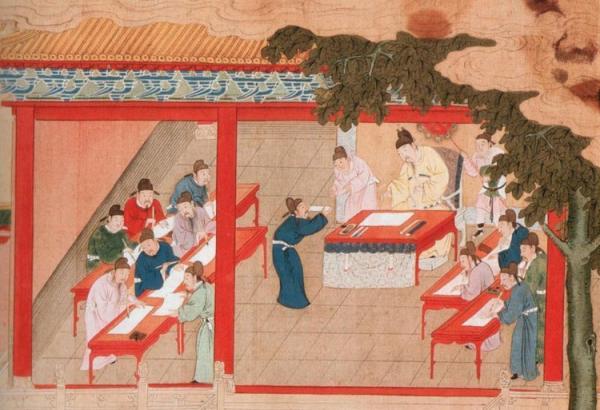
Cheating of scholars
Entrainment sometimes occurs during the examination. In the early years of Ganyuan in the middle Tang Dynasty, Li Gou was the chief examiner, and decided to prepare rhyme books, Five Classics and History in the examination room. He told the candidates that "great countries choose scholars, but they are talented in their work, so please look up the classics here" and allowed them to consult them at will. This move continued until the late Tang Dynasty. In the early period of the Northern Song Dynasty, it was forbidden to enter the school with books, which became a complete closed-book examination. However, the resulting entrainment behavior was repeatedly prohibited. Although the official had to search the scholar under the pressure of offending the dignity of the scholar before entering the school, the result was not completely satisfactory. Ouyang Xiu wrote a letter when he learned about the tribute: "I overheard that in recent years, juren openly carried words, all of which were small papers and fine books, and they were well prepared to copy sections. Every time I write a book, the pen worker gets 30 thousand to 20 thousand. There are also a dozen people who have collected a total of 1.2 million yuan, hired Qian as a false name, and entered the examination hall according to the example. They only entered the examination hall with words in their arms, and others took the test instead. " For the sake of entrainment, scholars even developed crowdfunding. It must be said that the creativity of Song people is not lost to today. In the Southern Song Dynasty, there were also children of imperial clan who brought model essays to the entrance during the examination. They found that there were twelve articles that met the topic, copied one by themselves, and generously distributed the remaining eleven articles to others, so everyone was on the list.
In the Tang and Song Dynasties, candidates with unknown questions were generally allowed to leave their seats to ask the examiner, which was called "invitation", so some candidates flocked to the examiner’s seat together, pretending to be invited, and quickly looked up the entrained content in the chaos, and the patrol managers were helpless. After the exam, many taxi drivers who are worried about their quality often don’t take their books with them, but throw them away in the field, so that "the legacy is compiled and simplified, and even piled up." These little books used for cheating are usually printed with the key points and model essays, numbered as "folder books". After the popularization of printing, Fujian Jianyang, as one of the important towns for printing and circulating books, became an important place for printing "folder books". From the benefit of pen copying to centralized printing and distribution, the demand of scholars for arms has spawned a new industrial chain. In the early years of Huizong, Cai Ping, a senior minister, was very strict in the management of arms, so he rewrote a very popular word "Shi Xiang Jin Tong" among the streets at that time, describing the nervousness of the soldiers with arms: "I like leaves and leaves, and I touch my arms." I hate it when the question is hit by a fellow. My wife can’t live, but she is just busy and can’t stand it. This cold sweat is as thin as a cloud. It’s worse than when I was young. I am still thinking about it, but I am afraid that someone will find it. " It can be described as very vivid.
In addition to cheating, there is also a cheating behavior in the exam called "transmitting righteousness", that is, transmitting words from a distance in the examination room. The court’s punishment for the act of spreading righteousness is basically as severe as that for the act of "carrying". Once found, the offending candidates will be removed from the examination room immediately and the examination qualification will be cancelled forever. In the Southern Song Dynasty, a courtier once said: "The house is extremely harmful, and the law is strictly forbidden … The righteousness is introduced from the ground with lines, the diet is openly introduced, and the ball is injected with water, which is full of ingenuity." And put forward the solution, that is, to make the government send more patrol personnel during the examination, carefully supervise outside the examination room, and even more leakage can only be injected at Mao’s time, and it is not allowed to inject after the candidates enter the venue. Even so, the disadvantages of spreading righteousness have not been completely banned.
In the end of the Song Dynasty, among many cheating methods, ghostwriting is recognized as the most harmful. In the third year of Shao Sheng’s reign (1096), the Ministry of Rites advised: "Holding on to others and ghostwriting are the most harmful." In the tenth year of Chunxi (1183), Fan Zhongyi pointed out the disadvantages of the examination hall, saying, "There are countless things, and ghostwriting is especially harmful." In the first year of the jubilee (1205), another courtier said, "Ghost writing is the worst. Obviously bribing, not afraid, or taking the test for the name, or pretending to be in the hospital. " There are many ways to ghostwrite. For example, candidates and substitute candidates enter the venue at the same time, and the substitute candidates may use the "dead name" to deliver the family exam, or use the "names of brothers, relatives and fellow villagers". After completing the answer sheet, they try to exchange test papers, and the operation is similar to the "passing on righteousness" mentioned above. Some candidates even let the substitute answer the questions all the time, "If you don’t enter the school, you will be listed out of high school". There are also candidates who get the articles written on behalf of the author through delivery in the examination room, "until there is a fake hand outside the door, submit the manuscript to the hospital", or "communicate inside and outside" and "pass in the papers", or remember the candidates’ names through the clerk and take the opportunity to alter and replace the papers during the pasting and copying stages. Scholars need to copy their family names at the beginning of the test paper, so some writers achieve their goals by changing the head of the paper by petty officials.
In order to prevent exchange, the official will stamp an ink seal between the home and the text of the handed-in test paper. However, in the fifth year of Chunxi (1178), when Fan Chengda made a tribute, he noticed that "its seal is long and narrow, and it can often be cut off and re-pasted", and proposed to stamp the back of the test paper with a Zhu seal, taking "the back seal of the test paper in Chunxi five years" as the seal, and stamped it obliquely, "to make its seal foot stand across the home." Indeed, the imperial court has been trying its best to prevent the disadvantages of ghostwriting. On the one hand, it severely punishes the insiders of ghostwriting and tongbao, and even distributes them thousands of miles away; On the one hand, the handwriting of the test paper and the home form will be identified and compared, and those with different handwriting will be lost. However, in the tenth year of Jiading (1217), some officials suggested that handwriting alone was not enough to eliminate the disadvantages of ghostwriting: if candidates bought spare test papers from imperial academy, who printed the test papers in advance, sent someone to take the test instead, copied the completed articles on the test papers off-site by themselves, and then changed them by petty officials, the handwriting would not be a problem. Although the cost of this operation is very high, which can reach "one or two thousand yuan", which is ten times the crowdfunding price mentioned above, the rich and powerful people do not care. Therefore, the imperial court strengthened the management of spare test papers, specially sent people to print them, and sealed them up after counting them. Those who requested to use the spare test papers needed to register their names and hometown knowledge, and before the provincial examination, it was customary to re-examine the juren who had passed the examination. If the candidates could not be written, or there were large errors in the answers, they would be disqualified from the provincial examination directly. In order to fight ghostwriting, the imperial court also took great pains.
The imperial examination system developed greatly in the Song Dynasty, and gradually matured in constant changes, and numerous talents were selected, which made scholars "all covet an official and die of old age". Even the juren who never passed the provincial examination, as long as they have accumulated to a certain number and age, can also pass the "special name" system, which is specially given by the Ministry of Rites, participate in palace examination, and gain birth, so people will not be completely desperate and become rebellious Huang Chao and Wang Xianzhi. Therefore, many people drown in the house, "heroes and heroes are all unconscious." In such an atmosphere, if it is difficult to overcome the temptation of themoon winning the laurel and to be no.1 at an early date, it is also inevitable that human weakness will lead to cheating and even pervasive. It is not difficult to imagine that examiners and petty officials open the door in various ways out of mutual affection, fear of power, or for money. Therefore, although the imperial examination system gradually became perfect since the Song Dynasty, the imperial court could not completely get rid of cheating in the imperial examination hall, and all kinds of cheating methods still emerged one after another, both on and off the court.
References:
Liu Lin, Diao Zhongmin, Shu Dagang: A Collection of Manuscripts of the Song Dynasty, Shanghai Ancient Books Publishing House, 2004.
Ye Shi: Selected Works of Mr. Shui Xin, Song Jizhen’s Edition Series, Online Bookstore, 2004, Volume 67.
Zhu Shangshu: On Imperial Examination and Literature in Song Dynasty, Elephant Press, 2006.
Zhang Xiqing: A General History of Chinese Imperial Examination System Song Volume, Shanghai People’s Publishing House, 2015.
Cheng Minsheng: On the Household Registration System of Imperial Examinations in Song Dynasty, Literature, History and Philosophy, No.6, 2002.
Chaffee, John W. The Thorny Gates of Learning in Sung China: A Social History of Examinations. Cambridge University Press, 1985.






